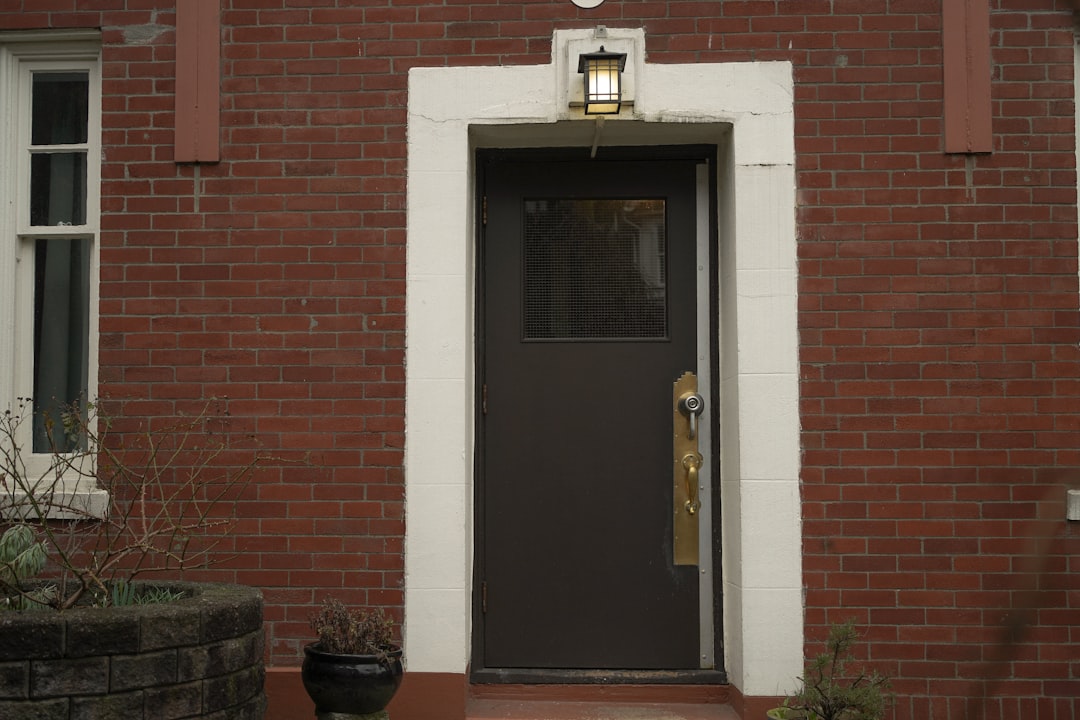

Engage prospects with a scan and streamline customer engagement with FREE QR code marketing tools by Sona – no strings attached!
Create a Free QR CodeFree consultation

No commitment

Engage prospects with a scan and streamline customer engagement with FREE QR code marketing tools by Sona – no strings attached!
Create a Free QR CodeFree consultation

No commitment
In today’s digitally driven landscape, commercial door repair services face growing pressure to deliver fast, reliable, and transparent solutions for diverse businesses. Analog processes like paper service logs, printed appointment cards, and static signage slow everything down. They also obscure high-value leads, reduce visibility into urgent needs, and create gaps where critical requests or reviews never reach your CRM.
QR codes have emerged as a strategic bridge between the physical and digital worlds, enabling frictionless requests for repairs, instant access to information, faster approvals and compliance checks, and richer customer data. By making service requests, maintenance documentation, and review submissions just a scan away, door repair providers can enhance every touchpoint for building owners, facility managers, and tenants. Learn more about QR codes in marketing.
This guide shows how to fully integrate QR codes into commercial door repair workflows to modernize access management, improve communication, and generate actionable insights for continuous improvement. You will learn proven steps and strategies to elevate service delivery using secure, trackable QR code solutions at every customer interaction, including modern door management system considerations.

Replacing outdated processes with QR-driven workflows removes friction at the moment of need. Paper-based work orders, static contact info on stickers, and non-interactive appointment cards often lead to delay or abandonment. With QR codes, a single scan can collect the right details, route the request to the right team, and update the status transparently for the requester.
Start by mapping the most common offline-to-online moments in your service delivery. Typical breakpoints include tenants trying to report after-hours issues, facility managers looking for a past maintenance record during an audit, or technicians needing access to site-specific instructions. A QR code at each of these moments turns waiting into action. When powered by a platform like Sona QR, each scan becomes a trackable event that syncs with your CRM and support tools for a closed-loop process.
Integrated QR platforms such as Sona QR power these workflows end to end. Every scan is captured, requests flow directly into your CRM, and engagement signals surface automatically. The result is a transparent path from scan to resolution, improving response time and accountability while removing friction for requesters.

Commercial door repair providers serve complex environments where speed, clarity, and traceability are essential. Traditional channels like generic phone lines or static email addresses often fail when urgency is high or when multiple stakeholders share responsibilities. Prospects may leave without converting if forms are hard to find, and property teams may miss opportunities to review or upsell because post-service follow-up is inconsistent.
QR codes solve these operational and marketing challenges by turning every physical asset into a digital entry point. A scan connects the offline moment to a structured digital experience that records the who, what, where, and when of engagement. These interactions can then be prioritized by urgency, routed to the right technician, and attributed back to a location, tenant, or asset for precise reporting. For broader applications, explore QR codes for marketing.
QR codes also reduce costs. They are inexpensive to produce, they scale easily, and they upgrade the performance of print assets like appointment cards, door decals, and compliance posters by making each one interactive and measurable. For commercial door repair companies, this means faster resolutions, better service history, and a steady flow of verified signals that strengthen sales and operations.

Not all QR codes are created equal. Choosing the right format for each use case ensures smooth experiences for customers and accurate data for your team. In commercial door repair, the most valuable codes are the ones that streamline repairs, speed technician access, and capture clean signals for follow-up.
Begin by mapping each workflow to a destination that makes sense on mobile. Then decide whether a static or dynamic code suits your needs. Static codes are useful for simple, permanent destinations like a general help page. Dynamic codes are essential when you need tracking, flexible destinations, or quick updates without reprinting.
An advanced platform like Sona QR centralizes these formats and lets you manage them at scale. You can assign unique codes per site or asset, change destinations when needed, and view engagement metrics in one place. This reduces manual work for operations teams and ensures every scan results in a complete, usable record.
Growth in commercial door repair hinges on capturing qualified demand at the exact moment of need, then converting that demand with fast response and high-quality service. Many opportunities are lost because signals stay offline. QR codes convert those signals into structured data that sales and service teams can act on immediately.
Look for placements that persist on-site and align with natural workflows. Every service visit is a chance to leave behind a digital entry point that funnels requests and feedback directly to you. In addition, customer-facing materials like invoices or compliance logs can prompt reviews and renewals while the experience is top of mind.
Strategic deployment across these touchpoints closes visibility gaps, unifies campaigns, and drives both revenue and customer satisfaction. Over time, the scan data also reveals which buildings or industries have the greatest repair demand, which placements produce the most engagement, and where to focus proactive outreach. For sector-specific ideas, browse Sona QR’s industry hub.

QR codes align closely with the most common interactions in door repair: urgent issues, scheduled maintenance, and post-service follow-up. Well-designed QR experiences make each step easier, faster, and more transparent for everyone involved. For additional context, see this overview of home repair QR.
Before launching, define the action you want for each use case, the data you need to capture, and the destination experience that will maximize conversions. Then create codes that match your branding and environment. A simple, benefit-led CTA like Scan to report an issue or Scan to view maintenance history encourages adoption.
These use cases can deliver measurable outcomes. Many providers see faster dispatch times due to complete intake data, higher on-time compliance for maintenance thanks to scan-to-log workflows, and a larger volume of verified reviews because the ask is timely and effortless.
Every QR scan is a signal of intent. When you deploy unique codes for different locations, services, and urgency levels, you capture context that can be used to segment audiences and tailor follow-up. Over time, this becomes a powerful retargeting engine that increases conversion rates and reduces wasted spend.
Start by tagging codes based on who is likely to scan and why. Property managers, facility directors, tenants, general contractors, and security staff often have different needs and time horizons. Segmenting by role and intent helps you deliver relevant content, such as maintenance plans to managers or fast-response options to tenants.
With a platform like Sona QR, each code becomes a smart entry point into your funnel. Sona QR captures scan context, syncs to your CRM, and can trigger email, SMS, or sales alerts. Your team can then tailor messaging and offers based on actual behavior rather than assumptions.
Disconnected campaigns create confusion, delay, and missed revenue. Integrating QR codes across your print, on-site, and digital channels creates a unified, consistent journey from first scan to completed service and beyond. Each scan connects an offline moment to measurable online action, which improves attribution and budget allocation. For attribution frameworks across channels, compare first-touch vs last-touch attribution models.
In commercial door repair, the most impactful channels are often on site, in the mail, or at events. These moments are close to the actual need, which makes engagement more likely. By linking these channels with your website, CRM, and ad platforms, you gain complete visibility into what influences requests and renewals.
Centralized QR platforms such as Sona QR keep messaging consistent, ensure all scans are tracked, and automatically sync contextual data into your CRM and marketing tools. This removes manual effort for your team and turns every code into a connected node in your growth engine.
Building a high-impact QR initiative does not need to be complex. Plan it like any campaign: define the goal, choose the right code type, design for the environment, deploy intentionally, and optimize with data. A few thoughtful decisions up front will significantly improve scan rates and conversions.
Use the following steps to stand up your first end-to-end QR workflow for commercial door repair. Whether you are targeting after-hours emergency requests or maintenance verification, this framework helps you reduce friction and capture cleaner data.
Identify one friction point with a clear business outcome. For example, enable 24/7 service requests from on-door QR codes so urgent issues are captured and routed instantly. Clarify what a successful outcome looks like: more after-hours requests captured, faster average response time, or higher first-contact resolution.
Define what information you must collect in the first scan to make the process smoother. Typical fields include property name, door or access point ID, issue description, photo upload, and a contact method. Keep it short to maximize completion on mobile.
Choose dynamic, trackable codes for use cases that gather data or require updates. Dynamic codes let you edit destinations, enable A/B testing, and measure performance by location and device. Static codes work for fixed destinations like a PDF of instructions, but they limit measurement and agility. For editable, trackable codes, try dynamic codes.
For most service requests, maintenance verification, and review collection, dynamic codes are the better choice. They ensure you can optimize as you learn and avoid reprinting when processes change.
Make the code easy to see and compelling to scan. Add your logo and brand colors with a clear border for contrast. Pair the code with a short, benefit-led call to action like Scan to request a repair or Scan for maintenance history. Include a short line of privacy reassurance if applicable, such as Your data is used only to process this request.
Test across devices, angles, and lighting conditions. Place sample codes on materials with similar textures and surfaces to ensure reliable scanning on glass, metal, or textured doors. Confirm the destination loads fast on mobile and that the form is effortless to complete.
Place codes exactly where engagement occurs. On-door service tags are ideal for urgent issues. Maintenance logs and equipment labels support compliance. Invoices and direct mail invite feedback or renewals. Trade show signage and brochures capture net-new leads and route them to quote requests. See more placements in Sona QR’s use case library.
Match each placement to a dedicated destination and segment tag in your QR platform. This ensures each scan is routed correctly and reported with the right context in your CRM. Document your deployment plan so technicians and sales staff know where codes should live and how to talk about them.
Monitor scan data and conversions from day one. Look for trends by location, daypart, and device. Watch for form drop-offs, slow load times, or confusing steps that cause friction. Optimize copy, placement, and destination content based on performance.
Use a platform like Sona QR to track scans by time, location, and device, sync with your CRM, and test variations. Schedule a monthly review to update placements, refine CTAs, and roll out new use cases based on emerging needs.
A disciplined cycle of testing and iteration will steadily increase scan rates, reduce response times, and improve customer satisfaction. Over time, connect these improvements to revenue outcomes like higher renewal rates, larger preventive maintenance contracts, and more upsell opportunities.
Without analytics, QR codes are just links. With analytics, they become a measurable growth channel. Commercial door repair teams need to attribute scans to outcomes, not just count them. The goal is to connect each real-world interaction to a request, a completed service, a review, or a renewal.
Start by defining the metrics that matter most. Common benchmarks include scan volume by location, conversion rate from scan to form submission, average response time for QR-initiated requests, and review rate post-service. Tie these to business outcomes like reduced time to dispatch, improved SLA adherence, and increased revenue from preventive contracts.
Sona QR makes this easy. It captures detailed scan data, unifies fragmented touchpoints across buying and service stages, and syncs with CRM tools like HubSpot and Salesforce. Sona is an AI-powered marketing platform for identity resolution and revenue attribution. Learn more on Sona’s homepage. For model selection, see Sona’s blog post titled single vs multi-touch attribution models.
Scaling QR impact requires consistent tagging, clean destinations, and simple automation. Choose a few best practices that fit your environment and roll them out with technician and client education. Once you see results, expand to more touchpoints and more advanced workflows.
Keep in mind that the strongest deployments are the most obvious ones. Clear CTAs near the point of need, fast-loading forms, and visible branding build trust and improve scan rates. Pair codes with small moments of delight, like instant status confirmations or helpful safety tips, to encourage repeat engagement.
Creative deployment examples include QR-enabled access passes that grant technicians temporary Wi-Fi and site instructions or QR codes on project punch lists that link directly to unresolved items for faster closeout. Sona QR supports these use cases and integrates with the systems you already use, so you can generate and track your first codes in minutes.

Seeing how peers deploy QR codes can spark ideas and accelerate your rollout. The most successful examples share a few traits: simple and clear CTAs, high-visibility placement, fast mobile experiences, and tight integration with service and sales tools.
Consider how these real-world patterns could fit your operations. What signage can carry a QR code where tenants will actually see it? Which documents get the most attention right after service? How can you reduce steps for a technician on site so they log everything during the visit instead of later in the truck?
QR codes have become indispensable tools in modern commercial door repair. They turn every door, sticker, invoice, and brochure into a trackable bridge between customer needs and your response. By closing data gaps and enabling frictionless requests, compliance, and feedback, QR solutions help providers avoid missed opportunities and boost operational efficiency.
Centralized QR deployment and analytics platforms like Sona QR and Sona.com make it possible to capture valuable prospects, sync engagement data, and adapt workflows based on real outcomes. This data-driven approach improves service quality and transforms each scan into an opportunity for upsell, cross-sell, or retention.
Forward-thinking commercial door repair businesses are transforming operations and visibility with QR codes. Use these strategies to bring frictionless, trackable engagement to your business. Start with one or two high-impact placements, measure results, then scale across your portfolio. When every scan flows into your CRM and triggers the right action, you will increase responsiveness, customer satisfaction, and revenue growth. Start creating QR codes for free.
QR codes are revolutionizing the commercial door repair services industry by simplifying access management and streamlining customer interactions. They enable technicians and clients to securely and instantly access repair histories, service schedules, and support resources, enhancing transparency and efficiency at every touchpoint. Imagine a world where your team scans a code to unlock detailed service records or schedule maintenance without delays—transforming routine repairs into seamless, customer-centric experiences.
With Sona QR, you can easily create dynamic, trackable QR codes tailored for commercial door repair workflows. Update access permissions on the fly, monitor scan activity in real time, and connect each interaction to measurable service outcomes—all without the hassle of reprinting materials. This smart technology not only improves operational efficiency but also helps you attract new clients by demonstrating cutting-edge, reliable access solutions.
Start for free with Sona QR today and turn every scan into a gateway for faster repairs, satisfied customers, and business growth.
Signs include urgent door malfunctions, recurring issues like hinge or closer problems, difficulty accessing or securing doors, and the need for compliance or maintenance verification.
Choose a service that offers fast, transparent responses, uses modern tools like QR codes for seamless service requests, maintains clear communication, and integrates with CRM for tracking and accountability.
The article does not specify average costs for commercial door repairs.
Prevent issues by integrating QR code workflows into recurring maintenance schedules, enabling technicians to log work and update status on site, which keeps asset histories current and helps prioritize proactive maintenance.
QR codes enable frictionless repair requests, instant access to asset history and instructions, faster approvals, real-time status updates, improved communication, actionable data collection, and better customer feedback and compliance tracking.
Use Sona QR's trackable codes to improve customer acquisition and engagement today.
Create Your FREE Trackable QR Code in SecondsJoin results-focused teams combining Sona Platform automation with advanced Google Ads strategies to scale lead generation

Connect your existing CRM

Free Account Enrichment

No setup fees
No commitment required

Free consultation

Get a custom Google Ads roadmap for your business






Launch campaigns that generate qualified leads in 30 days or less.
